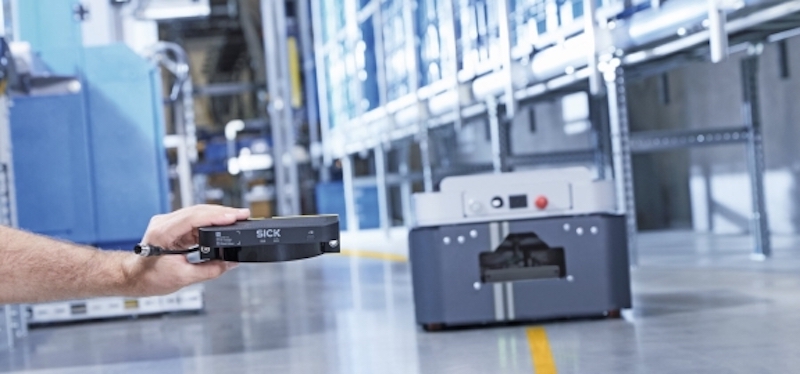SICK launches ‘world’s first’ LiDAR multibeam scanner for small vehicles
SICK Sensor Intelligence has launched what it describes as “the world’s first” LiDAR multibeam scanner with safe, solid-state technology for line-guided small vehicles.
The scanGrid2 safe multibeam scanner from SICK is the first of its kind in the world. The compact sensor uses a novel and in-house developed solid-state LiDAR technology to increase the productivity of small autonomous and line-guided transport vehicles.
Certified as a Type 2/SIL 1 safety sensor according to IEC 61496-3, the scanGrid2 can protect hazardous areas up to performance level c and works well for collision avoidance. An app and cloning function also ensure a high level of up time and fast fleet deployment.
SICK employed its novel and in-house developed solid-state LiDAR technology for the first time when developing its first scanGrid2 safe multibeam scanner.
Aaron Woytcke, market product manager of industrial safety at SICK USA, says: “With this sensor, manufacturers of autonomous and line-guided autonomous vehicles gain a cost-effective safety solution that can boost the productivity of applications.

“Specifically, this means increasing the speed or payload of the vehicles, or being able to eliminate mechanical barriers like fences.”
Conventional safety laser scanners are often not a suitable solution for these very simple and exceptionally cost-effective small vehicles for economic reasons.
Users often choose between limiting the speed or payload of the vehicle or avoid operating them in unfenced areas to minimize the risks associated with the vehicles.
The scanGrid2 now offers users new possibilities for successfully increasing the productivity of small autonomous and line-guided carts. Thanks to the rapid return on investment, switching to a safety sensor is now a viable option with initial installations showing productivity increases between 50 and 70 percent.
The scanGrid2 safely detects objects of a variety of sizes within the freely configurable protective field zones, can evaluate multiple fields, and can execute configurable monitoring cases. A warning field zone extending up to four meters beyond the safe working range can be employed for non-safety actions.
The solid-state LiDAR technology is based on the principle of time-of-flight measurement and eliminates all moving parts. Instead, the device uses only semiconductor elements in conjunction with geometrically arranged optics modules to span a protective field of 150 degrees.
Within the defined protective field zone, scanGrid2 can solve Type 2 classified, performance level c safety requirements in the context of safety applications.
App and cloning function ensure a high level of up time and fast fleet deployment
Woytcke says: “When it comes to the use of safety sensors, easy configuration, fast commissioning, and diagnostics are the key aspects our customers are looking for. Ensuring fast servicing also saves valuable time and money.”
That is why SICK redesigned the configuration and diagnostics features. Besides the tried-and-proven infrastructures and tools such as the Safety Designer software, the engineers at SICK have implemented an additional Near Field Communication (NFC) interface.
This, in conjunction with the Safety Assistant app, enables diagnostics to be performed on the sensor quickly and easily, such as through a smartphone.
The advantages of this approach are also readily apparent during commissioning or servicing. Sensor configurations transfer wirelessly from one sensor to another thanks to a cloning function in the app.

